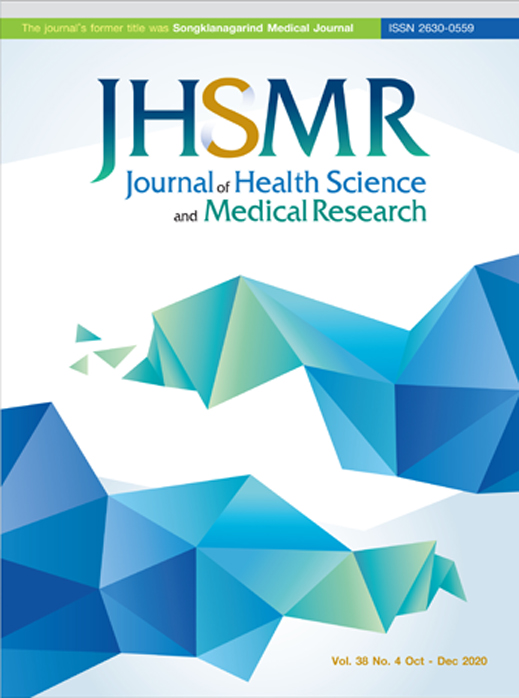Transcatheter Closure of an Aortic-right Ventricular Fistula with an Amplatzer Duct Occluder II (ADO II)
DOI:
https://doi.org/10.31584/jhsmr.2020744Keywords:
Amplatzer Duct Occluder II, aortic-right ventricular fistula, transcatheter closureAbstract
The treatment of choice for an aortic-right ventricular fistula is surgical repair; however, transcatheter treatment of left to right shunt using an occluding device has recently increased. We report a 12-year-old boy who weighed 45 kilograms and presented with an asymptomatic heart murmur. He was diagnosed with aortic-right ventricular fistula. Color Doppler echocardiography revealed a 3-millimeter aortic-right ventricular fistula that was 5 mm from the right coronary artery, left to right flow, pressure gradient of 100 millimeters of mercury (mmHg); good left ventricle function, ejection fraction of 70.0%, and right ventricular systolic pressure of 40 mmHg (SBP 120 mmHg) with a normal coronary artery pattern. He successfully underwent transcatheter closure using an Amplatzer Duct Occluder II with transesophageal echocardiography and fluoroscopy guidance.
References
Miller DL, Morris JJ, Schaff HV, Mullany CJ, Nishimura RA, Orszulak TA. Reoperation for aortic valve periprosthetic leakage: identification of patients at risk and results of operation. J Heart Valve Dis 1995;4:160–5.
Pilgrim T, Meier B, Wenaweser P. Aorto-right ventricular fistula after transfemoral aortic valve implantation. J Invasive Cardiol 2010;22:E30-1.
Edwards JE, Burchell HB. The pathological anatomy of deficiencies between the aortic root and the heart, including aortic sinus aneurysms. Thorax 1957;12:125–39.
Rustad DG, Hopeman AR, Murr PC, Van Way CW. Aortocardiac fistula with aortic valve injury from penetrating trauma. J Trauma 1986;26:266–70.
Davis JA, Cecchin F, Jones TK, Portman MA. Major coronary artery anomalies in a pediatric population: incidence and clinical importance. J Am Coll Cardiol 2001;37:593–7.
Yildirir A, Batur MK, Kabakci G. Ruptured aneurysm of the sinus of valsalva in association with persistent left superior vena cava--a case report. Angiology 2000;51:167–71.
Choudhary SK, Bhan A, Sharma R, Airan B, Kumar AS, Venugopal P. Sinus of Valsalva aneurysms: 20 years’ experience. J Card Surg 1997;12:300–8.
Arora R, Trehan V, Rangasetty UMC, Mukhopadhyay S, Thakur AK, Kalra GS. Transcatheter closure of ruptured sinus of valsalva aneurysm. J Intervent Cardiol 2004;17:53–8.
Barragry TP, Ring WS, Moller JH, Lillehei CW. 15- to 30-year follow-up of patients undergoing repair of ruptured congenital aneurysms of the sinus of Valsalva. Ann Thorac Surg 1988;46:515–9.
Khoury A, Khatib I, Halabi M, Lorber A. Transcatheter closure of ruptured right-coronary aortic sinus fistula to right ventricle. Ann Pediatr Cardiol 2010;3:178-80.
Cullen S, Somerville J, Redington A. Transcatheter closure of a ruptured aneurysm of the sinus of Valsalva. Br Heart J 1994;71:479–80.
Fedson S, Jolly N, Lang RM, Hijazi ZM. Percutaneous closure of a ruptured sinus of valsalva aneurysm using the amplatzer duct occluder. Catheter Cardiovasc Interv Off J Soc Card Angiogr Interv 2003;58:406–11.
























